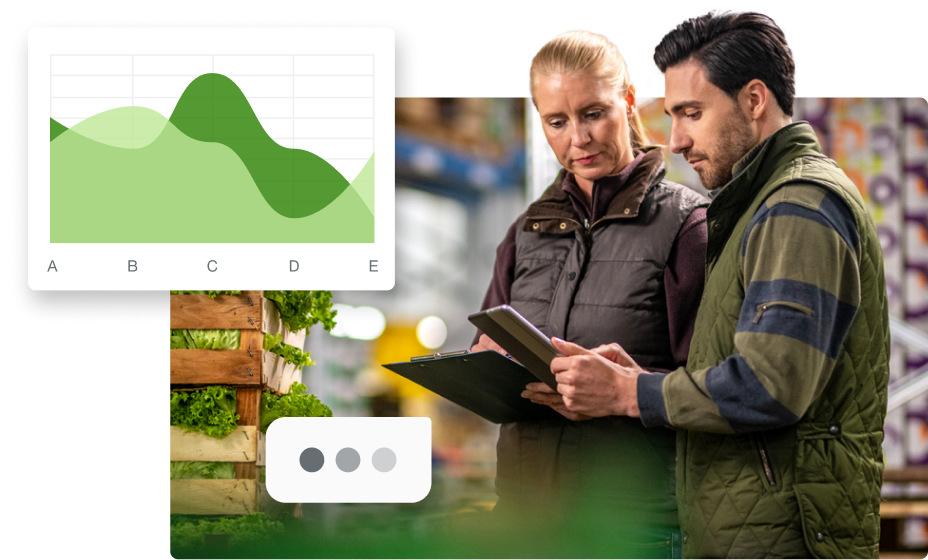Who owns the manufacturer’s baseline revenue and why does it matter?

In CPG, baselines provide a 'base' level of sales derived from regular purchasing behavior without additional marketing or promotional activities. Setting accurate revenue baselines is crucial for measuring trade promotions effectiveness, forecasting inventory levels, allocating marketing budgets, optimizing pricing strategy, assessing brand health and making strategic decisions. The ownership of baselines can vary within an organization, and different scenarios can arise.
Improve your trade promotions
Book a demo
Demand planners
Demand planners are responsible for producing accurate sales forecasts based on historical data, seasonality, and market factors. They focus on generating and adjusting statistical forecasts before incorporating promotional uplifts. Accuracy is essential here, based on clean and consistent historical sales data, and effective communication with sales and marketing functions regarding upcoming initiatives impacting demand. On the plus side, Demand planners bring accuracy and objectivity, ensuring the baseline is neutral and less influenced by optimistic sales aspirations. There is usually a standardized process across all categories and markets, making it easier to roll up and consolidate forecasts. On the other hand, Demand planners may not have the same level of insight into account specific details and retailer strategies as the sales Key Account Managers (KAMs) do, which could lead to missing forecasting nuances.
Their standardized process helps to ensure accuracy and objectivity, but they may lack insight into account-specific details and retailer strategies.
Key account managers
Responsible for managing the retailer relationships, key account managers (KAMs) have deep insights into promotions, product introductions, and shelf placements that impact sales. While they may not own the baseline, they manage the promotional forecast on top of it for their accounts. This requires a clear view of promo calendars, deal structures, and expected uplift using trade promotion excellence tools which track promotional spend, profitability and ROI. Their understanding of specific retailers and market conditions increases accuracy, but they may be inclined to be overly optimistic in their forecasts which could distort the real baseline.
Further, different KAMs in the organization may have varying forecasting methodologies, leading to inconsistencies. And by focusing on key accounts, a view of smaller accounts or the broader market perspective may be lost.
Other stakeholders
Sometimes sales and marketing teams may have input into baseline and promotional forecasts based on planned initiatives. They should collaborate closely with both demand planners and KAMs to align promotional activities with brand strategies and ROI targets.
Likewise Finance plays a critical role in ensuring budgets are met and promotional spends are within limits. Finance needs accurate forecasts to inform budgeting, and clear visibility into trade spend and promotional ROI to manage profitability.
The best approach depends on your organization’s structure, culture and objectives. Some companies benefit from demand planner ownership for objectivity and standardization, while others value the insights and alignment with sales strategies offered by key account manager ownership. A hybrid approach, where demand planners provide an initial baseline forecast using statistical methods and KAMs adjust based on their insights, can be effective. This requires clear communication and collaboration to ensure that the final forecast is both accurate and actionable.
Trade promotion management systems: the Switzerland of baseline management
These systems serve as a neutral platform for baseline management, helping to get everyone on the same page. They estimate expected sales without promotions based on historical data and predictive analytics. Forecasted uplifts from planned promotions are layered on to provide a complete sales picture and optimize ROI. TPMO systems tracked by item and promoted product group can help allocate budgets for trade promotions and improve the accuracy of both baselines and promotional forecasts over time.
In conclusion, the revenue baseline is a collaborative effort between functions like Demand Planning and Key Account Management. Collaboration, information sharing, and the use of tools like trade promotion management and optimization systems are essential for optimizing sales and promotional strategies for maximum profitability.

